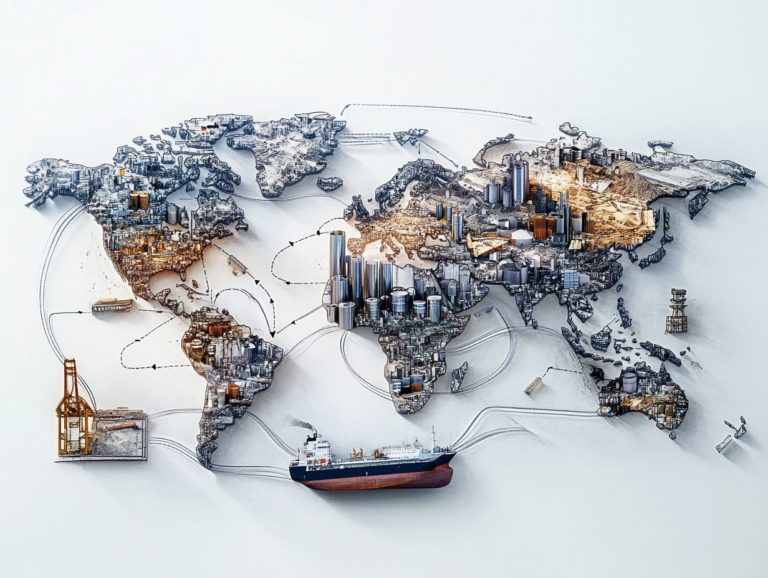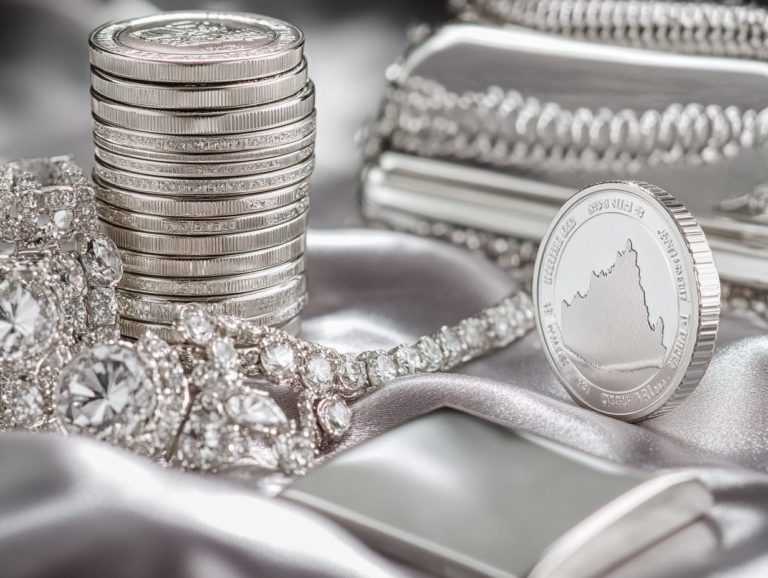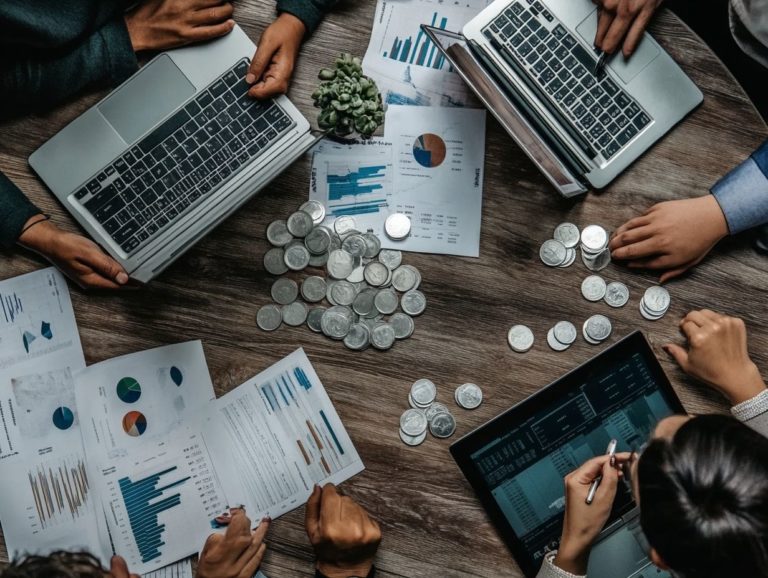The Ethical Considerations of Silver Mining
Silver mining holds significant importance across a range of industries, from electronics to jewelry. Its influence, however, extends beyond mere economic advantages.
This exploration delves into various facets of silver mining, highlighting its environmental repercussions, including pollution and the degradation of ecosystems. It also examines its effects on local communities and indigenous populations.
We will encounter pressing ethical issues such as worker exploitation and corporate responsibility, before turning our attention to sustainable alternatives.
Join us as we unravel the complexities of silver mining and the urgent need for transformative change.
Contents
- Key Takeaways:
- Overview of Silver Mining
- The Environmental Impact of Silver Mining
- The Social Impact of Silver Mining
- Ethical Concerns in Silver Mining
- Alternatives to Traditional Silver Mining
- Frequently Asked Questions
- 1. What are the ethical considerations when it comes to silver mining?
- 2. How does silver mining impact the environment?
- 3. What about the treatment of workers in silver mines?
- 4. Are indigenous communities affected by silver mining?
- 5. What steps can be taken to ensure ethical silver mining practices?
- 6. Is it possible to mine silver ethically?
Key Takeaways:
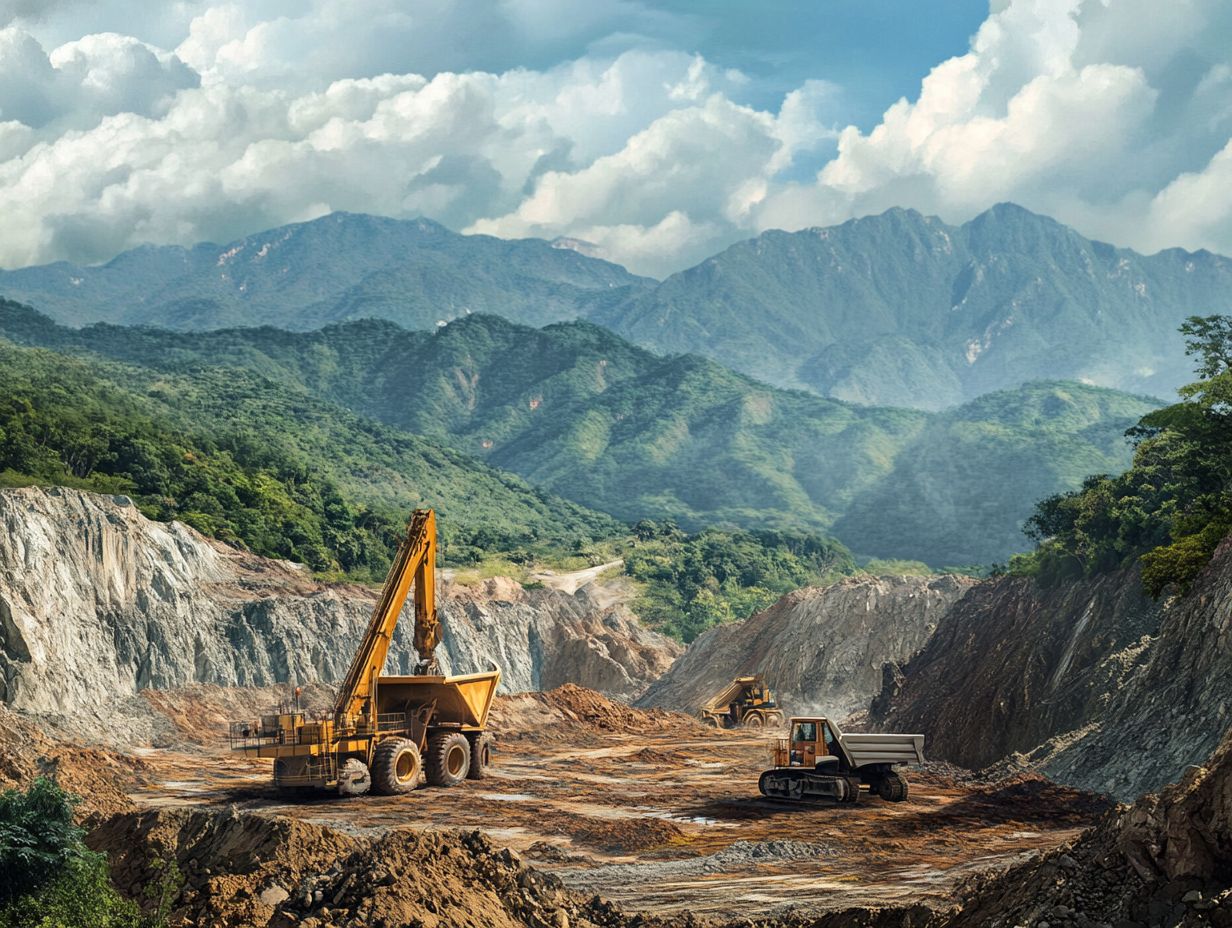
- Silver mining seriously harms the environment, leading to pollution and the destruction of vital ecosystems.
- Local communities and indigenous peoples often suffer adverse effects from silver mining, raising ethical concerns.
- Companies must practice corporate responsibility and be held accountable for worker exploitation and human rights violations in silver mining.
Overview of Silver Mining
Silver mining involves extracting silver-rich rock from diverse sources using various methods to extract silver that have advanced remarkably over time.
As demand for silver products grows, the industry faces heightened scrutiny regarding its environmental impact and the ethical standards in mining operations.
The movement toward sustainable mining and eco-silver initiatives aims to reduce ecological footprints, promote community engagement, and enhance social benefits for local economies all while maintaining the quality of silver and ensuring responsible sourcing.
What is Silver Mining?
Silver mining is the process of extracting silver from silver-rich rock using various advanced methods to separate this precious metal from surrounding materials.
This multifaceted activity can be pursued through methods like underground mining or open-pit mining. The choice depends on the depth and quality of the silver deposit. Underground mining involves creating tunnels or shafts to access deep-lying silver veins, minimizing surface disruption while ensuring efficient metal extraction.
Open-pit mining is a good option when the silver ore is closer to the earth’s surface. It offers a more straightforward extraction process but comes with a higher environmental price tag.
Technologies such as flotation, leaching, and carbon-in-pulp are crucial for enhancing silver recovery rates. They expertly separate silver from lower-grade ores like argentite and galena. These ore types hold significant value in the silver industry, shaping both the profitability and sustainability of mining operations.
The Environmental Impact of Silver Mining
The environmental challenges of silver mining are urgent and complex, demanding our attention now! This includes pollution, habitat destruction, and profound changes to local ecosystems, all contributing to a considerable ecological footprint.
Mining operations often bring various challenges. These include waste management issues and the use of harmful chemicals that can worsen environmental damage.
Pollution and Destruction of Ecosystems
Pollution and ecosystem destruction are significant consequences of silver mining, often resulting in irreversible damage to local habitats and biodiversity.
When silver mining operations extract this precious metal, they frequently introduce harmful substances into nearby waterways and soil. Heavy metals like lead and arsenic can seep into streams and rivers, posing serious risks to aquatic life and the health of communities that depend on these water sources.
This toxic runoff disrupts not only the flora but also the fauna that rely on these ecosystems for survival. To mitigate these adverse effects, it’s essential to embrace sustainable mining practices and engage in ecological restoration initiatives. By doing so, we can ensure that future mining activities prioritize environmental health while balancing economic needs.
The Social Impact of Silver Mining
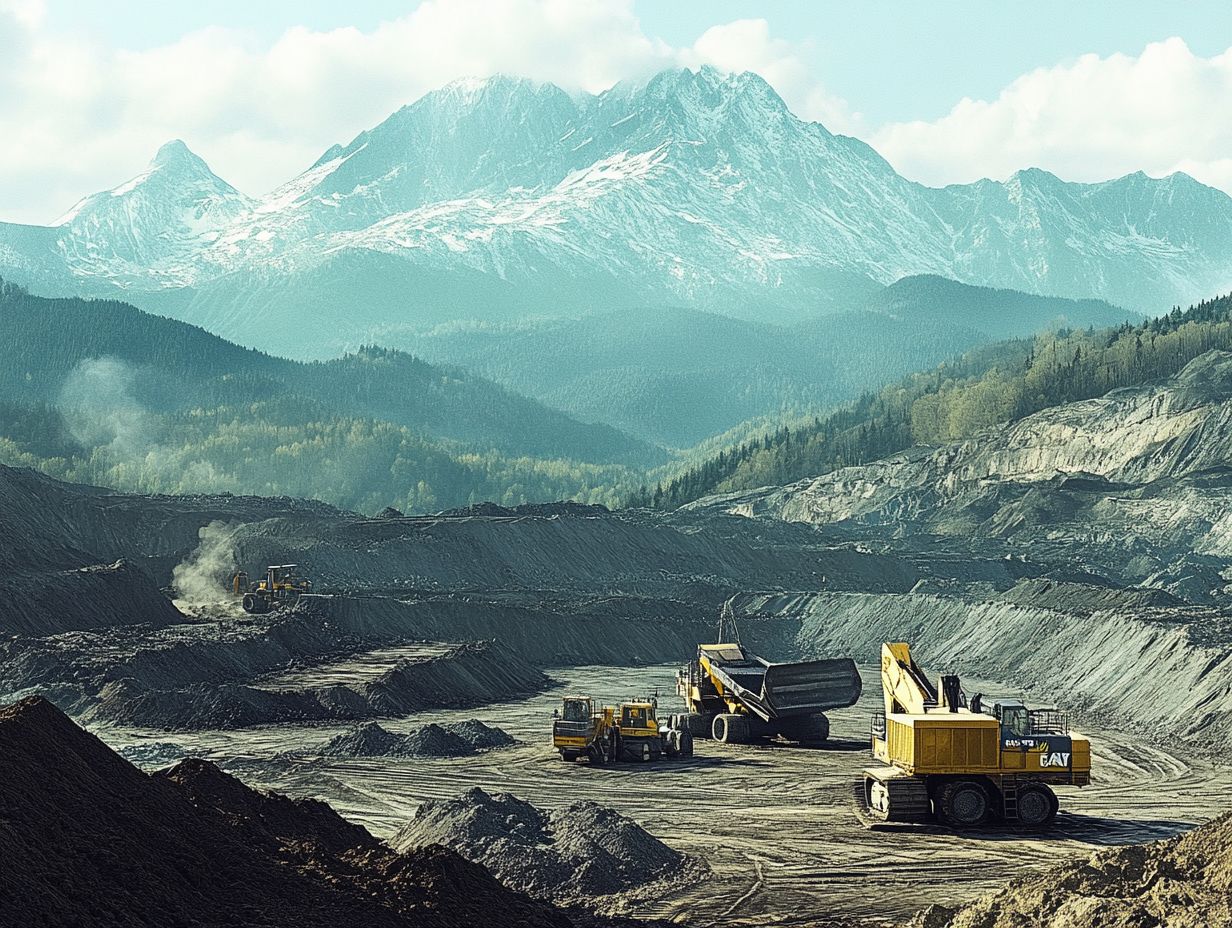
The social impact of silver mining can be quite profound, presenting you with both big advantages and serious problems within local communities directly engaged in mining activities.
While silver mining has the potential to fuel economic growth and generate job opportunities, it may also incite social conflicts and disrupt traditional ways of life.
Effects on Local Communities and Indigenous Peoples
The effects of silver mining on local communities and indigenous peoples can vary significantly, ranging from positive social benefits to considerable disruptions in traditional practices.
For example, in places like Mexico and Peru, some mining operations have led to enhanced infrastructure and job opportunities, allowing local economies to flourish. However, these benefits often come with a hefty price tag; residents may face displacement and environmental degradation, which can threaten their cultural heritage and disrupt their way of life.
Community engagement is essential. It fosters dialogue between mining companies and local populations, enabling shared decision-making that respects indigenous rights. Ethical sourcing practices which ensure fair wages and safe working conditions are crucial in minimizing adverse impacts, ensuring that local voices are heard and addressing the complex challenges associated with the environmental impact of silver mining.
Ethical Concerns in Silver Mining
Ethical concerns in silver mining hold significant importance, particularly as issues like abuse of workers and human rights violations attract heightened scrutiny from consumers and watchdog organizations.
The silver industry must embrace ethical practices that prioritize fair treatment and corporate responsibility.
The silver industry must embrace ethical practices for a better future. Your awareness and advocacy can contribute to fostering a more responsible and just industry.
Worker Exploitation and Human Rights Violations
Worker exploitation and human rights violations are critical issues within the silver mining industry, often linked to hazardous working conditions and the pervasive use of child labor.
The ramifications of such exploitation ripple far beyond individual miners, ensnaring entire communities in relentless cycles of poverty and health risks. In regions of Mexico, where silver extraction is rampant, numerous reports paint a grim picture of the perilous environments workers face, frequently devoid of basic safety equipment and proper training. This not only endangers their immediate health but also stifles the community’s broader socioeconomic growth, highlighting the need to understand the environmental impacts of gold mining.
However, the rise of fair trade practices presents a beacon of hope, promoting ethical sourcing and giving power to local artisans. Meanwhile, international regulations endeavor to hold corporations accountable, advocating for enhanced working conditions and labor rights on a global scale.
Corporate Responsibility and Accountability
Corporate responsibility and accountability are crucial for cultivating ethical practices in the silver mining industry. By ensuring that companies comply with regulations and commit to sustainable operations, you set a standard that not only enhances reputations but also positively impacts local communities and the environment.
Take, for example, companies like Fresnillo and First Majestic Silver. They’ve embraced transparency initiatives and community engagement programs designed to minimize ecological damage while bolstering local economies. These firms lead in responsible sourcing and fair labor practices, demonstrating that strict adherence to regulations can foster improved social equity.
The influence of regulatory frameworks is vital. Stricter laws compel silver producers to adopt more sustainable methods, ultimately benefiting both the environment and their operational integrity. By prioritizing these values, you contribute to a more responsible industry landscape.
You hold the power to influence the silver mining industry. Let s push for change together.
Alternatives to Traditional Silver Mining
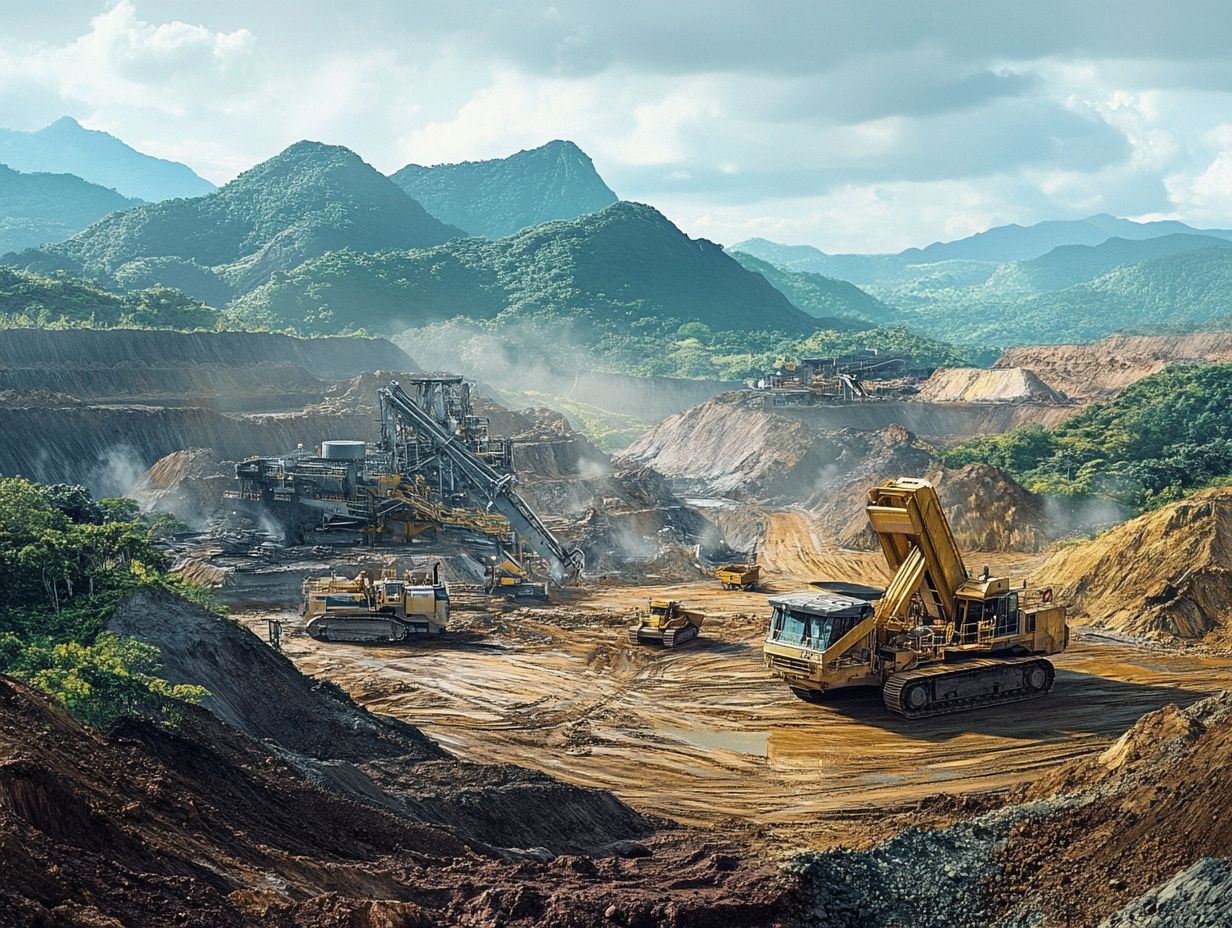
Alternatives to traditional silver mining are increasingly gaining prominence as sustainable practices take center stage. By exploring options like recycling silver and embracing eco-friendly silver initiatives, you can source silver in a way that’s kinder to the environment.
These innovative approaches diminish the ecological footprint associated with silver production and champion renewable energy and clean technologies.
Sustainable Mining Practices
Sustainable mining practices are crucial for minimizing environmental impacts and promoting ethical standards within the silver industry. Focus on clean technologies and ecological restoration to contribute to a healthier planet.
Embracing innovative technologies, such as automated ore extraction and real-time water quality monitoring systems, allows significant reductions in carbon footprints and enhances operational efficiency. Companies are adopting effective waste management strategies, including recycling water used in processing and reusing mining by-products. This proactive approach prevents contamination of local ecosystems.
Consider success stories that illustrate these methods. A major silver mining operation in Mexico used bioremediation methods that employ living organisms to clean up the environment, restoring land previously damaged by mining activities. The result? Rejuvenated ecosystems flourishing with native flora and fauna.
By prioritizing these sustainable methods, you have a crucial role to play in reducing the ecological footprint of the silver industry while setting a high standard for responsible mining practices.
Recycling and Reusing Silver
Recycling and reusing silver are essential steps to reduce the demand for newly mined silver. By recovering silver from various products, you help minimize the environmental impact of the industry.
Through techniques like chemical leaching and mechanical processes, valuable silver can be extracted from old electronics, jewelry, and photographic materials. This not only conserves finite resources but also significantly reduces energy consumption typically associated with traditional mining practices.
The recycled silver has applications across industries, including electronics, jewelry, and medical devices, where its anti-microbial properties are particularly valuable.
Act now by recycling silver to help build a sustainable economy, fostering responsible consumption and waste management while cutting down the carbon footprint linked to mining and refining processes.
Ultimately, this practice goes beyond simply reclaiming materials; it s about protecting the environment for future generations.
Frequently Asked Questions
1. What are the ethical considerations when it comes to silver mining?
The ethical considerations of silver mining include the impact on the environment, the treatment of workers, and the displacement of indigenous communities.
2. How does silver mining impact the environment?
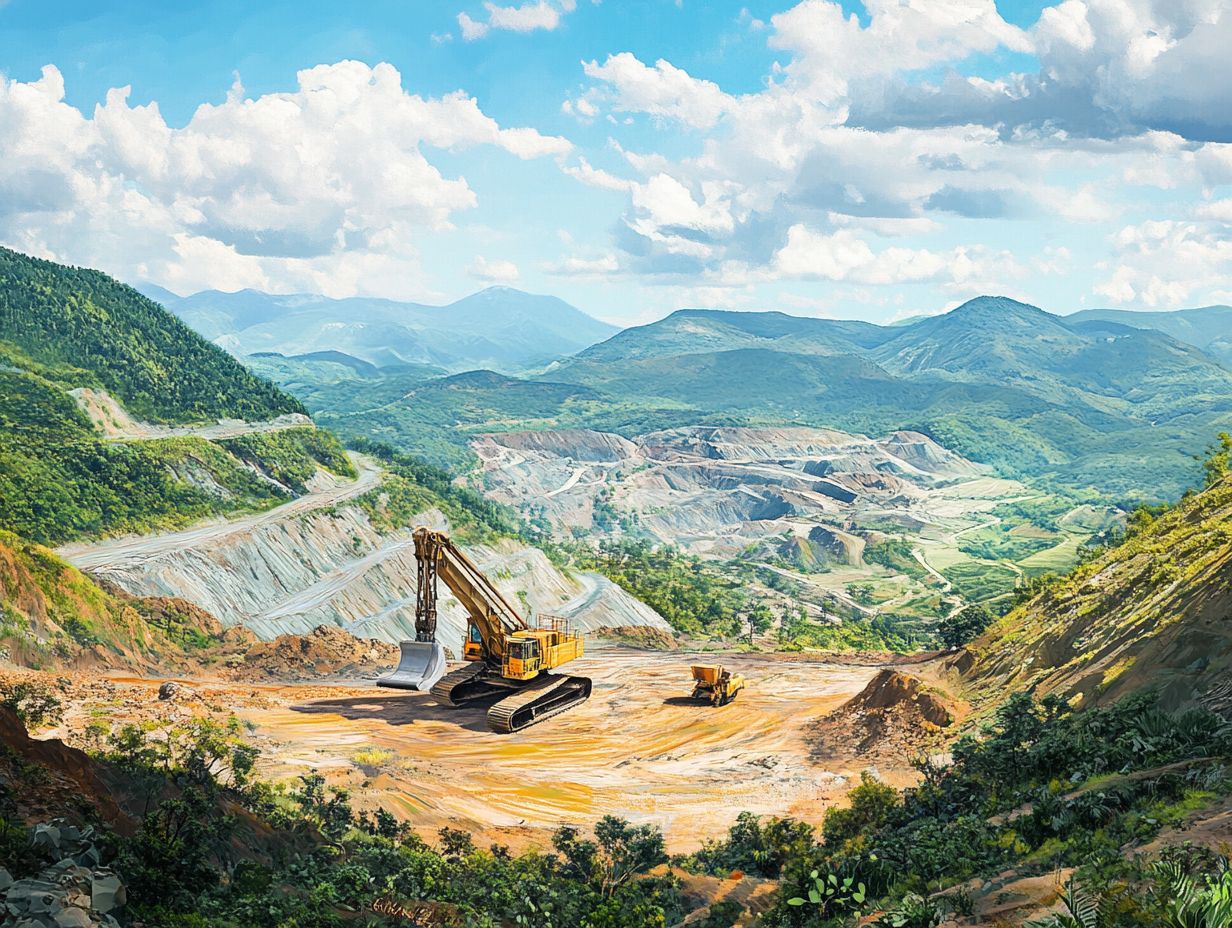
Silver mining can have severe environmental consequences, including deforestation, air and water pollution, and destruction of habitats for wildlife.
3. What about the treatment of workers in silver mines?
There have been reports of unethical labor practices in some silver mines, such as low wages, hazardous working conditions, and lack of safety regulations.
4. Are indigenous communities affected by silver mining?
Yes, indigenous communities often face displacement and loss of land due to silver mining operations, which can devastate their way of life.
5. What steps can be taken to ensure ethical silver mining practices?
Companies can implement sustainable mining practices, provide fair wages and safe working conditions for employees, and involve local communities in decision-making processes.
6. Is it possible to mine silver ethically?
Yes, it is possible for companies to mine silver ethically by following responsible and sustainable practices, considering the impact on the environment and communities.
Explore more about sustainable practices in silver mining and join the movement for a better future!













